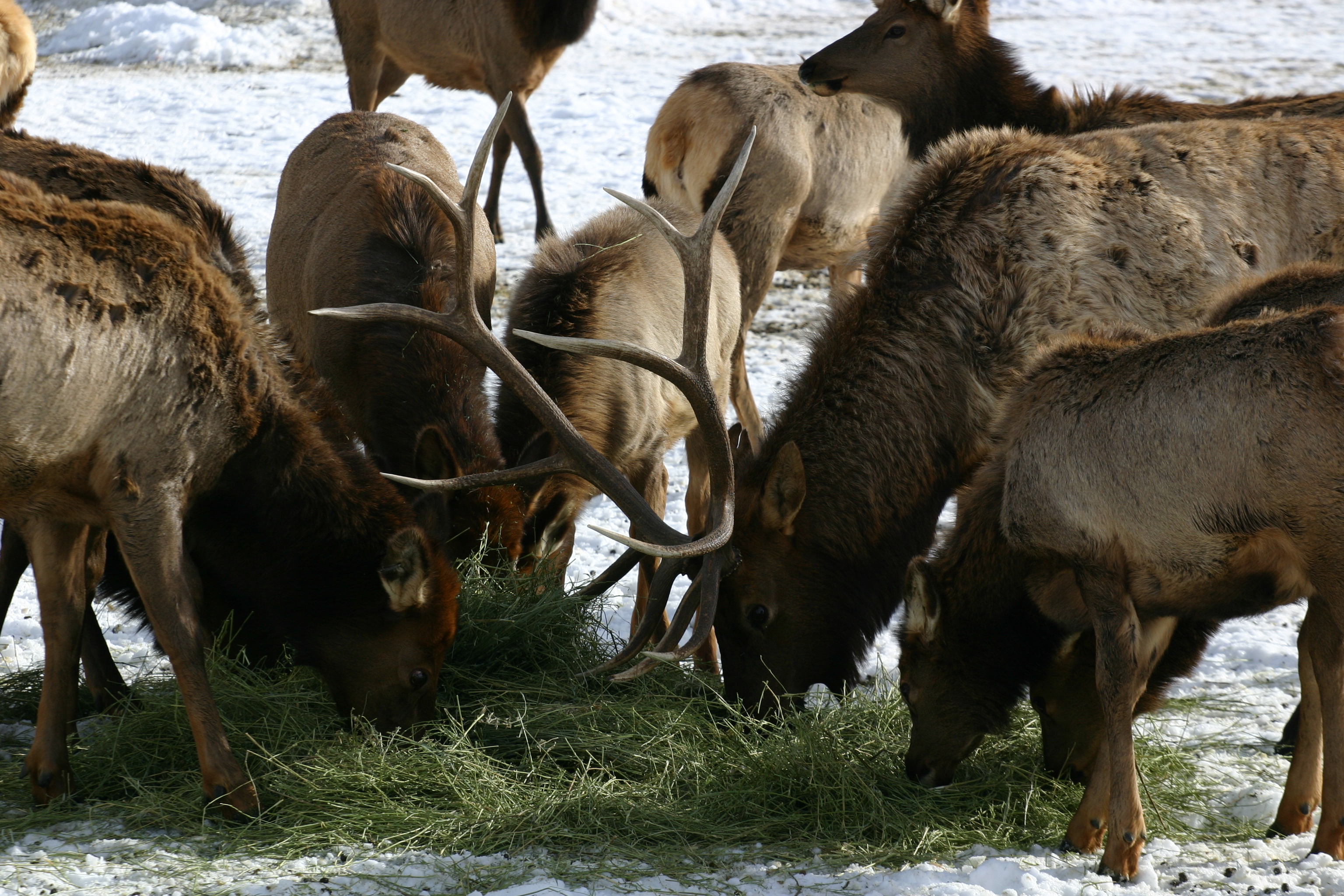Game and Fish moves to ‘Phase II’ of elk feedgrounds public process

Phase II involves additional opportunity for the public to share their thoughts on feedgrounds and contribute to shaping the elk feedgrounds management plan.
5/10/2021 7:31:48 PM
Jackson - The Wyoming Game and Fish Department’s elk feedgrounds public collaborative, which began last fall, is now transitioning to Phase II of their public process. Phase II involves additional opportunity for the public to share their thoughts on feedgrounds and contribute to shaping the elk feedgrounds management plan.
“We heard great feedback from the public during Phase I which will undoubtedly continue into Phase II,” said Scott Edberg, Game and Fish deputy chief of wildlife and chair of the elk feedgrounds steering team. “Phase II will be designed to have more in-depth conversations with various stakeholder groups and provide additional opportunities for shared learning on topics the public asked to hear more about.”
The department’s elk feedgrounds steering team, charged with developing a long-term feedgrounds management plan for the agency, provided an update to the Wyoming Game and Fish Commission at their April meeting in Jackson. A summary report of Phase I is also available online. The steering team consists of 13 Game and Fish personnel closely tied to the elk feedgrounds program along with five representatives from partnering federal agencies, which include the National Elk Refuge, Bridger-Teton National Forest, Bureau of Land Management and Grand Teton National Park.
Elk have utilized feedgrounds in northwest Wyoming since the early 1900s. Approximately 12,000 elk are supplementally-fed during the winter months on 22 Game and Fish-operated feedgrounds in Teton, Sublette and Lincoln counties. An additional 8,000 elk are fed at the National Elk Refuge in Jackson managed by the U.S. Fish and Wildlife Service. High concentrations of elk create concern for the transmission of disease to wildlife and cattle. Supplemental feeding is a complicated and often contentious issue with biological, social, economic and political considerations.
In Phase I of the elk feedgrounds public process, Game and Fish held five virtual meetings with the intent of sharing the complexities of feeding elk in western Wyoming, including why elk feedgrounds began and how the feeding of elk has evolved over the years, particularly with regard to wildlife diseases such as brucellosis and chronic wasting disease. A recording of these presentations along with other information on the feedgrounds public collaborative can be viewed on the Game and Fish website.
Another goal of Phase I was to hear from the public on elk feedgrounds-related issues they are most concerned about and what Phase II of the public process might look like, including additional information needs.
To begin Phase II, the elk feedgrounds steering team will hold a series of meetings with the various stakeholder groups and general public over the next several months providing multiple opportunities for shared-learning and public input. Additional information on these meetings will be forthcoming in June.
“We want to hear everyone’s thoughts including ideas for a path forward regarding elk feedgrounds management into the future,” Edberg said. Everything is on the table for the department’s consideration in developing the management plan.”
The steering team’s goal is to present a long-term elk feedgrounds management plan to the Wyoming Game and Fish Commission in the spring of 2023. To learn more and get involved visit the Elk Feedgrounds Public Collaborative webpage.
(Mark Gocke, Public Information Specialist - 307-249-5811)
- WGFD -
Legal Disclaimer:
EIN Presswire provides this news content "as is" without warranty of any kind. We do not accept any responsibility or liability for the accuracy, content, images, videos, licenses, completeness, legality, or reliability of the information contained in this article. If you have any complaints or copyright issues related to this article, kindly contact the author above.
